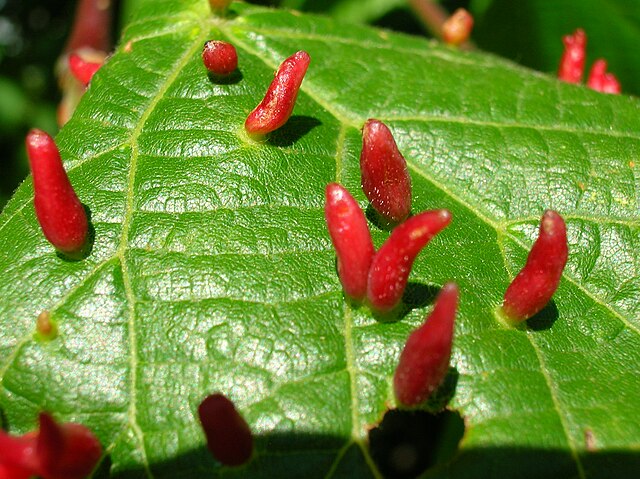Gall
insect-induced growth on plant. often very distinctive and even species-specific structures developed when insects, fungi or bacteria stimulate abnormal growth of a plant From Wikipedia, the free encyclopedia
Remove ads
A gall is a growth on the surface of plants and other lifeforms. They are caused by various parasites, such as fungi, bacteria, insects and mites.






Plant galls are abnormal growths of plant tissues similar to benign tumors or warts in animals.[1]
What causes a plant gall can often be known without the actual agent being there. Many types of gall have typical structures. This is true of many galls produced by insects and mites.
Insect galls on plants give some herbivorous insects their own microhabitat. They are plant tissue which is controlled by the insect. Galls are the habitat and food source for the maker of the gall. The gall may contain nutritious starch and other tissues.[2] Galls often give the insect physical protection from predators.[3][4]
Insect galls are usually induced by chemicals injected by the larvae or the adults of the insects into the plants. After the galls are formed, the larvae develop inside until fully grown, when they leave. In order to form galls, the insects must seize the time when plant cell division occurs quickly. The growing season, spring in temperate climates, is longer in the tropics.
Remove ads
Human use
Galls can be used by humans, and have been since ancient times. One use is to collect the pigment which many galls make. The galls are rich in resins and tannins, from which dyes and inks can be made. Galls can be used to make a mordant for dyeing: mordants make the dye on the cloth permanent. Also, permanent black ink can be made from galls, and that has been done for a long time.[5]
The larvae inside the galls may be used as food or as fishing bait, and some galls have medicinal uses.[6]
Remove ads
References
Gallery
Wikiwand - on
Seamless Wikipedia browsing. On steroids.
Remove ads
